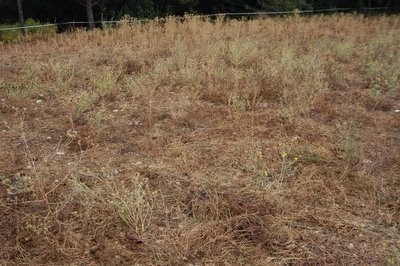
Seed sowing is now underway, although the forecast is for more bad weather next week the daylight hours are numerous enough for the plants to grow. The seeds of the Lantana pictured here were saved last autumn and are amongst those that are to be sown. The woody seed pods pictured on a previous post have been opened with more than a little firm persuasion and a few of those seeds have been sown too.
Northern European Winter and Spring seem to ebb and flow like the tide and its easy to get caught out by the arrival of a sudden cold snap. The heated propagator and cold frames help to stabilise the planting environment and lengthen the growing season to make seed raised plants a viable and cost effective way of gardening.
Southern Europe seems to have a much shorter winter period and the Mayor of the Spanish village where our Mediterranean garden is situated feels that,
'winter here lasts only three weeks'. I hope she is right. Though I know that our neighbour Joan flies off to Brazil for a month as soon as he needs to remove the ice from his swimming pool, winters here can be cold but are usually quite dry. He also keeps his prized collection of finches indoors a little longer than that three week winter, before Springtime allows them the freedom of his aviary.
After winter has slowed down the pace of the garden year, Spring arrives with a flourish of wild flowers and instills a sense of urgency into the gardener. Weeds prosper when your back is turned and there is much clearing up to do, and there are beds that will need to be prepared for planting. Cultivating your garden without digging seems an attractive proposition but living in the countryside with those millions of airborne weed seeds makes it a little unlikely at the moment.







